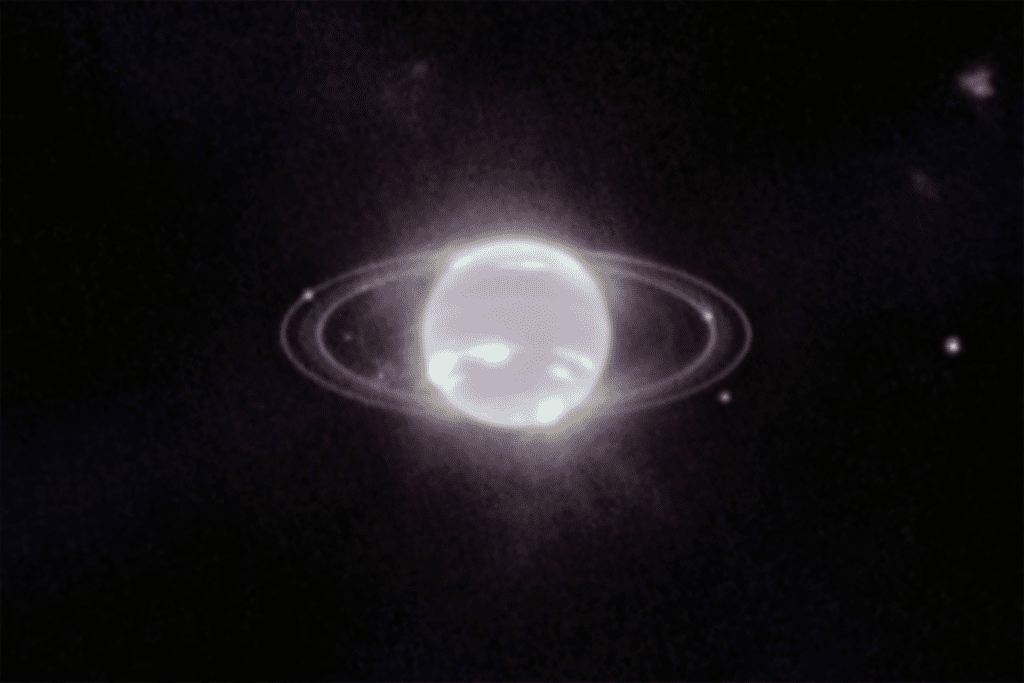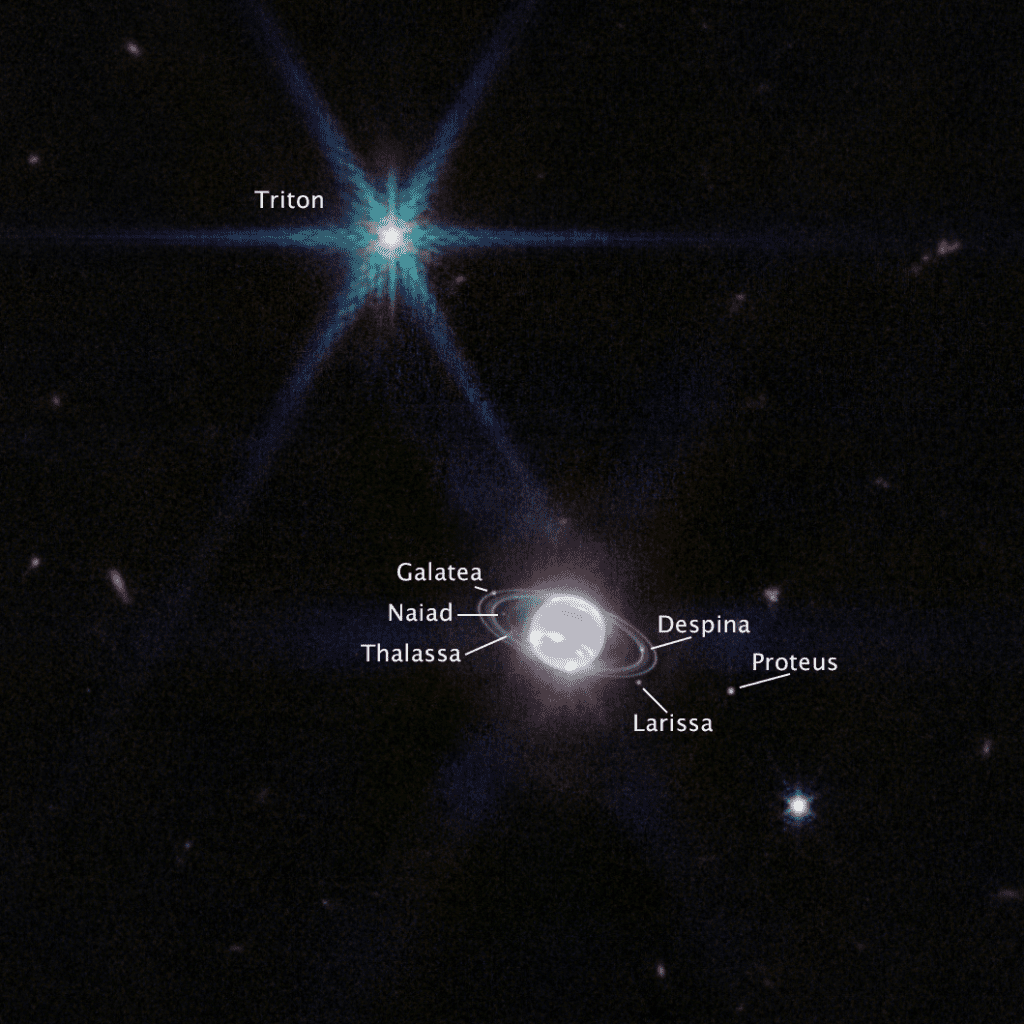The James Webb Space Telescope (JWST) has been having a field day with the solar system recently. After imaging Jupiter, showcasing its auroras and hazes, and Mars’ crater-riddled surface, NASA has now directed the powerful space telescope towards Neptune, the farthest-reaching planet of the solar system.

Webb didn’t disappoint one bit, delivering the clearest view of the icy world in more than 30 years, which was the last time when a spacecraft, the still operational Voyager 2, made a flyby of Neptune and beamed back pictures to Earth. Voyager 2 has now traveled completely outside the solar system into interstellar space.
“It has been three decades since we last saw these faint, dusty rings, and this is the first time we’ve seen them in the infrared,” notes Heidi Hammel, a Neptune system expert and interdisciplinary scientist for Webb.
When James Webb tried to image Mars with its sensitive infrared instruments, mission control engineers had to tweak the infrared cameras and apply data processing to clear the images up because the red planet is just too close, essentially blinding the telescope. After all, James Webb — which took 30 years to build and cost more than $10 billion — is first and foremost designed to peer into far-away galaxies from the infancy of the universe.
But Neptune is nearly 60 times farther away from Earth than Mars, which allowed James Webb to zoom in more comfortably. When viewed in visible light, the eighth and most distant planet from the sun appears sky-blue or as a uniform, peaceful ocean world that would have made the Roman god of the sea proud. In reality, Neptune is anything but peaceful and its atmosphere is actually mainly made of three gases: hydrogen (80%), helium (19%), and methane (1%). It’s actually clouds of methane gas that are responsible for the distant planet’s blue marble appearance, a recent study found.
Since James Webb imaged Neptune in infrared, the planet no longer appears blue. In fact, as methane absorbs so much infrared and red (it is a potent greenhouse gas), Neptune appears quite dark, with bright lines of white streaking across its surface — those are high-altitude clouds in its atmosphere, which reflect sunlight before it is captured by the methane. The thin line circling the planet’s equator beautifully illustrates the global atmospheric current that is responsible for driving winds and storms on Neptune.

Additionally, in the same view, you can also see all of Neptune’s 14 moons. The bright, flashing source of light in the top left corner is no star at all, but rather Triton, Neptune’s largest moon. The reason why it shows up so bright in infrared is that its surface is covered in frozen nitrogen, reflecting over 70% of the incoming light. Coupled with Neptune’s dark appearance in these wavelengths, Triton steals the show with its contrasting features. But that’s not the only unusual thing about Neptune’s moon, which is larger than Pluto. Triton orbits Neptune in a retrograde orbit, which is atypical of a natural satellite. Scientists speculate Triton could have originally been a Kuiper Belt object that was later gravitationally captured by Neptune.
Most of the thousands of exoplanets astronomers have identified thus far are icy giants like Neptune and Uranus. By studying Neptune in greater detail, scientists will not only gain a better understanding of icy giants in our backyards but also gain valuable lessons about how these apparently common worlds form in the rest of the Milky Way.



